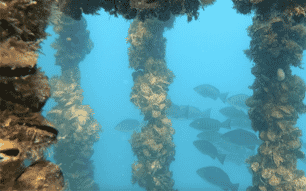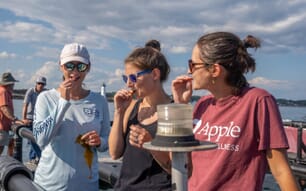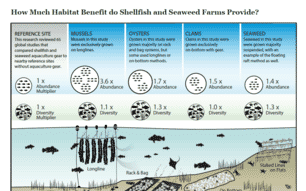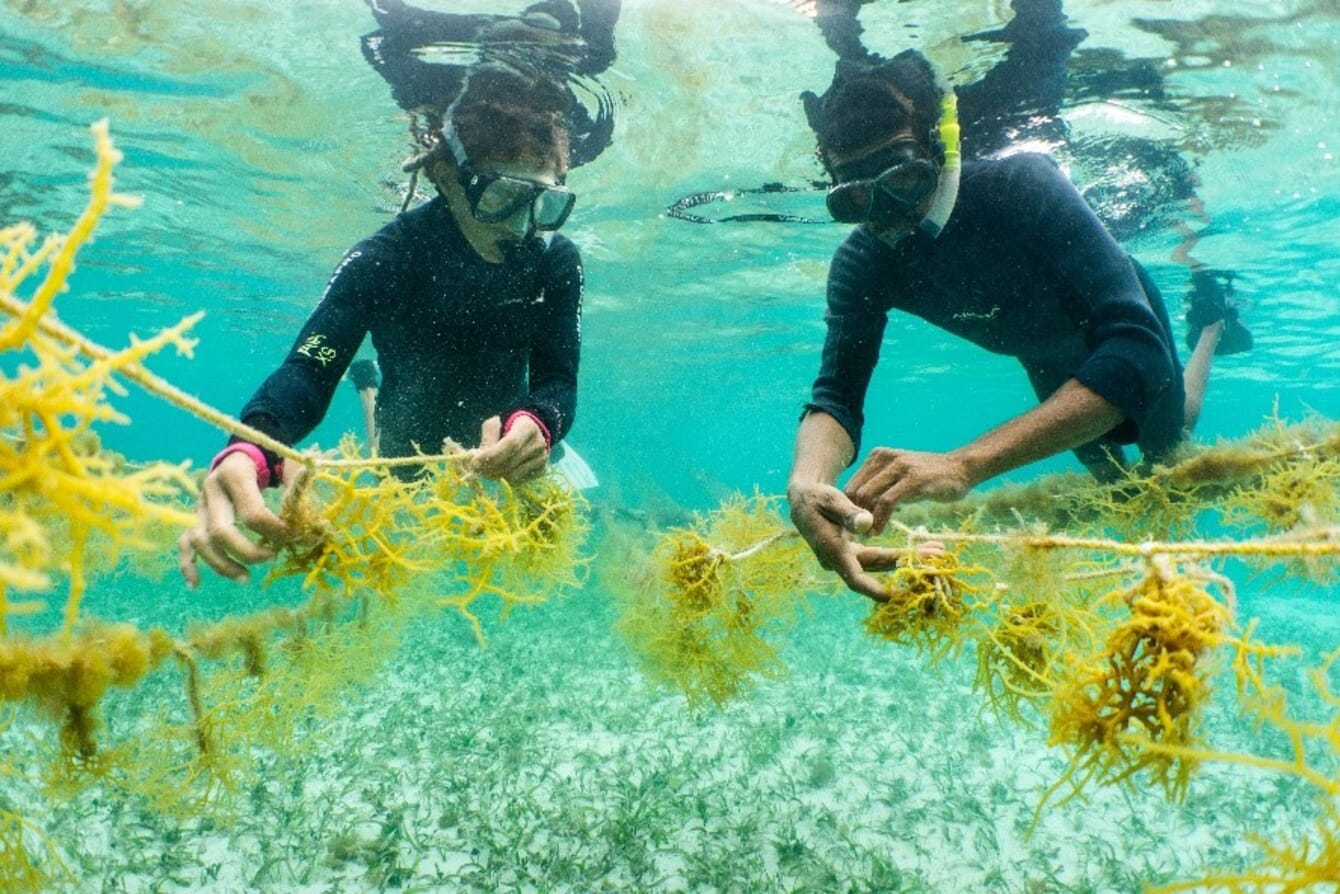
© Randy Olsen
A joint study between the University of Adelaide and The Nature Conservancy (TNC) has assessed how GHG emissions associated with fed-finfish, macroalgae and bivalve mariculture could be mitigated, exploring both major GHG sources and carbon sinks.
The study provides guidance to both industry and regulators on how to make significant and immediate progress in the development of climate-friendly mariculture practices and emissions reduction outcomes for these sectors. It also highlights gaps in our knowledge that should be prioritised for further investigation.
The key message
“There is no single ‘cure-all’ that will work in all sectors and situations,” says lead author Alice Jones from the University of Adelaide. “Rather, the varying combinations of operational approaches and interactions with surrounding environments mean that different approaches to emissions reduction will be needed in different situations. But there are opportunities for meaningful reductions in GHG emissions or to enhance carbon sequestration across a range of sectors and operational models.”
What are the climate impacts of mariculture?
GHG emissions from mariculture occur via many pathways, including upstream (eg finfish feed production), on-farm, and downstream (eg transportation).
The greatest opportunities for high-volume reductions in GHG emissions are likely to come from changes in upstream and downstream parts of the supply chain, such as improvements in the production and supply chain associated with feed and methods of post-harvest transport. But this study also notes that on-farm emissions can be high, particularly for the finfish sector.
Consequently, to capitalise on the low-emissions potential of mariculture, attention must be given to sources of energy for operations, particularly when developing sustainable solutions to mariculture expansion, such as farming in offshore environments.
Importantly, the study also identifies a key gap in existing knowledge, highlighting that interactions between mariculture operations and surrounding marine environments influence GHG emissions, particularly through the degradation of seafloor habitats and the associated releases of stored carbon (termed environmental emissions). For example, environmental emissions linked to seagrass loss – a critical habitat for GHG-sequestering ‘blue carbon’ – due to the nutrient inputs from a relatively small number of finfish farms in these areas was conservatively estimated to add an extra 4.1 - 16.3 percent to the annual global emissions of the entire aquaculture industry.
Loss of seagrass through mariculture is also associated with losses of future blue carbon sequestration potential at magnitudes estimated to equal 0.31 percent of aquaculture’s current GHG footprint per year. Life cycle assessments for GHG emissions from mariculture have not typically accounted for these environmental GHG emissions, despite similar emissions from land degradation and land use change often being included in the carbon footprints of terrestrially farmed food.
“These estimates illustrate how important it is for finfish and other farms to avoid impacts to existing blue carbon habitats,” says Heidi Alleway, lead aquaculture scientist at The Nature Conservancy.
The paper provides guidance on how to achieve climate-friendly mariculture development.
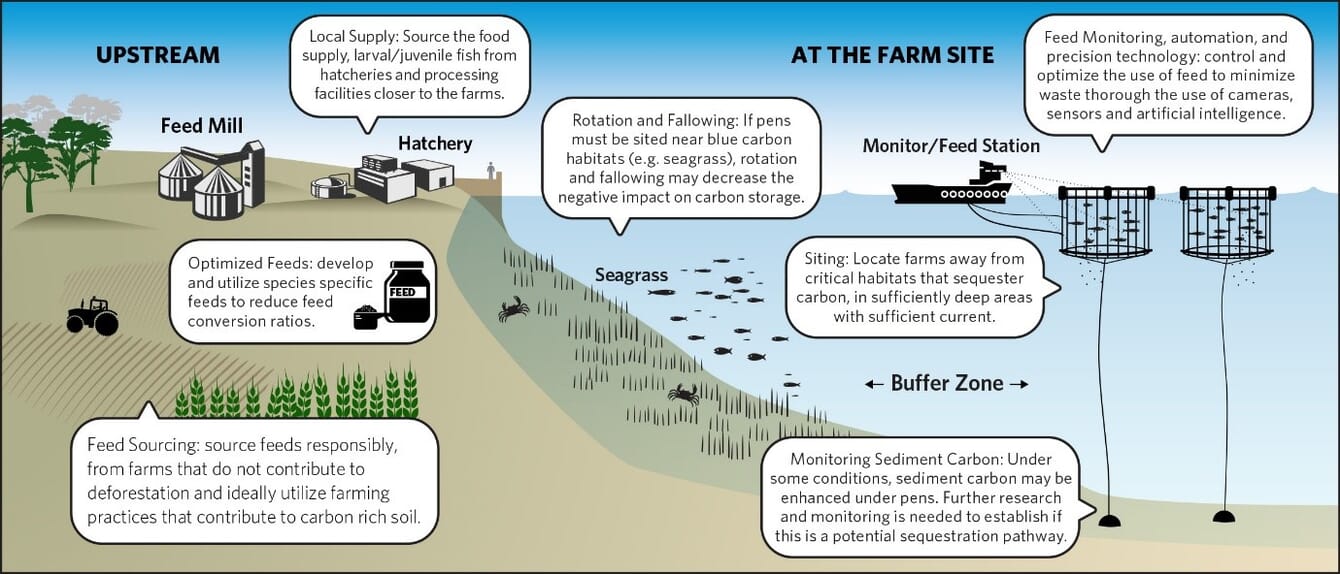
Solutions for climate-friendly seafood
Some common approaches exist to reduce emissions from on-farm energy and fuel use across all three sectors. These include shifting to low-emissions energy sources and biofuels; ensuring a greater inclusion of sustainably-produced farming materials; and increasing the number of species farmed on a site (polyculture). Diversification of production can maximise the resources used for farming, but it can also provide opportunities to reduce environmental emissions, such as indirect GHG releases from bivalve culture.
Adding seaweeds to existing operations – including those producing bivalves or finfish – can also help to mitigate environmental degradation and the release of GHGs, helping to make individual mariculture operations emission neutral.
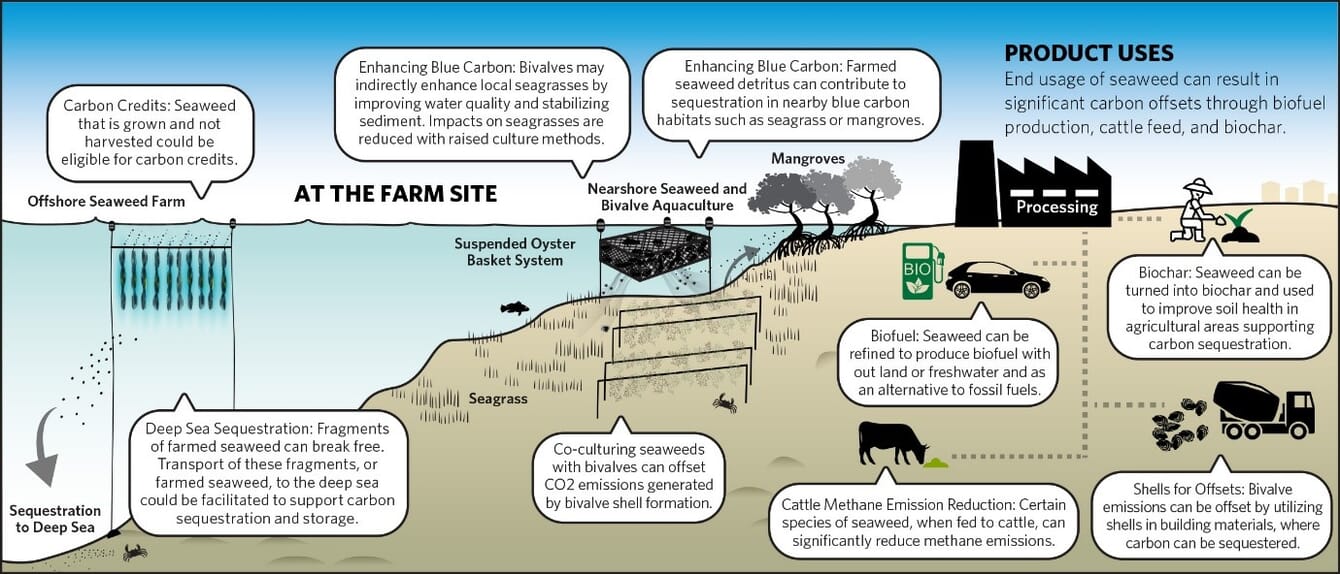
Also, to achieve carbon sequestration and the development of effective GHG offsets – which are increasingly of interest to the seaweed sector in particular – the fate of the product and scale of mariculture operations will be key. Carbon sequestration from mariculture cannot be assumed in any sector, including seaweed mariculture, and further work is needed to establish viable pathways to capitalise on this emissions reduction opportunity at a national and sub-national scale.
Looking ahead
Moving forward, this study highlights that there is the potential for mariculture to not only be a low GHG emissions sector, but also to achieve carbon neutrality. However, this relies on the adoption of climate friendly approaches at multiple scales of industry operation, regardless of their current GHG emissions profiles, backed by local and governmental support.
This shared responsibility requires greater support for the industry to balance expansion with increased access to renewable or low emissions energy sources, and the need to consolidate an agreed approach to carbon accounting. The greatest opportunities for high-volume reductions in GHG emissions are likely to come from changes in upstream and downstream parts of the supply chain. Therefore feed suppliers, retailers and consumers also need to be engaged in this challenge, by understanding their roles in the value chain.
Ultimately, development of climate-friendly seafood should be a shared responsibility between the industry, government and consumers. However, solutions must be designed to meet local as well as global needs to ensure they are effective.

